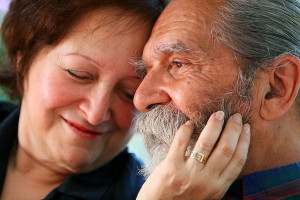- Calls to this hotline are currently being directed to Within Health, Fay or Eating Disorder Solutions
- Representatives are standing by 24/7 to help answer your questions
- All calls are confidential and HIPAA compliant
- There is no obligation or cost to call
- Eating Disorder Hope does not receive any commissions or fees dependent upon which provider you select
- Additional treatment providers are located on our directory or samhsa.gov
The Golden Years & Disordered Eating

There is a common belief that eating disorders only affect teenagers or young adults. While eating disorders typically start appearing during this time in someone’s life, they don’t just go away as someone gets older [1].
It’s possible that if an eating disorder goes untreated, someone can carry it with them into their older years. Research is also showing that the number of older adults developing eating disorders is increasing [1].
There are a few reasons why eating disorders may be increasingly affecting older adults. Here are a few ideas:
Body Image in Older Adults
Negative body image can contribute to the development of an eating disorder [2]. American culture is obsessed with appearance.
The bodies that men and women see in media are unrealistic for the majority of people. While there is pressure for men and women to look a certain way, women are often judged most harshly if they don’t live up to society’s standards.
This pressure doesn’t go away once you reach a certain age. Research shows that older women continue to feel pressure to live up to these societal ideals [2]. This pressure paired with the physical changes that come with older age can be a source of shame and stress.
It’s not to say that older bodies are not beautiful or attractive. All bodies are good bodies. It’s that our society focuses on youth and thinness and sends messages that this is the only type of attractive body.
Stressors
 Each phase of life has its own stressors. For example, during early adulthood, a common stressor is dating or succeeding in a career. During the older years, there are unique stressors such as dealing with physical health issues, adjusting to being retired, or not having kids at home.
Each phase of life has its own stressors. For example, during early adulthood, a common stressor is dating or succeeding in a career. During the older years, there are unique stressors such as dealing with physical health issues, adjusting to being retired, or not having kids at home.
These changes can take an emotional toll and can lead to feeling sad, scared, or stressed. Just like with younger populations, eating disorders can be a way to cope with emotional distress [2]. Older people may also be turning to disordered behaviors as a way to deal with the challenges that come with this phase of life.
There could be several other things contributing to the increase in eating disorders in the older adult population. Regardless of the reason, it’s important for anyone struggling with these conditions to get treatment.
The stereotype that eating disorders only occur in teens or young adults creates a stigma around eating disorders in older people. This may be a barrier for people to get the treatment they need.
Given this stigma, an older individual may not feel comfortable talking about their struggle with body image or disordered eating. It could be helpful for professionals, such as doctors or mental health clinicians, to screen their clients for eating disorders.
Routine screening can help people get the necessary treatment that they deserve. This is not only life-saving but can enrich their quality of life. Older adulthood should be a time to enjoy and reflect on the life you’ve lived. Eating disorders don’t have to take that away.
Resources:
[1] Peat, C.M., Peyerl, N.L., & Muehlenkamp, J.J. (2008) Body image and eating disorders in older adults: A review. The Journal of General Psychology, 135(4), 343-358. DOI: 10.3200/GENP.135.4.343-358 [2] Costin, C. & Schubert-Grabb, G. (2012). 8 keys to recovery from an eating disorder. W.W. Norton & Company.The opinions and views of our guest contributors are shared to provide a broad perspective on eating disorders. These are not necessarily the views of Eating Disorder Hope, but an effort to offer a discussion of various issues by different concerned individuals.
We at Eating Disorder Hope understand that eating disorders result from a combination of environmental and genetic factors. If you or a loved one are suffering from an eating disorder, please know that there is hope for you, and seek immediate professional help.
Published April 12, 2021, on EatingDisorderHope.com
Reviewed & Approved on April 12, 2021, by Jacquelyn Ekern MS, LPC
Samantha Bothwell, LMFT, is a licensed Marriage and Family Therapist, writer, explorer, and lipstick aficionado. She became a therapist after doing her own healing work so she could become whole after spending many years living with her mind and body disconnected. She has focused her clinical work to support the healing process of survivors of sexual violence and eating disorders. She is passionate about guiding people in their return to their truest Self so they can live their most authentic, peaceful life.

